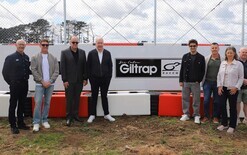Vehicle risk ratings scrapped

The Vehicle Risk Ratings (VRR) programme, which applies different levy rates to different makes and models of cars based on their safety ratings, will end on July 1.
Iain Lees-Galloway, Minister for ACC, pictured, believes there is no evidence that variable levies based on VRR contribute to injury prevention or incentivise people to buy cars with higher safety ratings.
“It also loads more of the burden onto low-income people and families because they are generally less able to buy cars with the best safety ratings,” he says.
“The evidence indicates it has had absolutely no impact on people’s purchasing decisions. It hasn’t been fit for purpose so far. We can use it in a better way by giving people better up-front information.”
Lees-Galloway adds the VRR programme is challenging for the Ministry for Business, Innovation and Employment (MBIE) to administer and lacks evidence that it is contributing to a safer vehicle fleet in New Zealand.
“There is no evidence that variable levies based on VRR contribute to injury prevention or encourage the purchase of cars with higher safety ratings,” says the minister.
“The government has made road safety a priority in the transport budget, investing $4.3 billion over three years in programmes and projects aimed at saving lives on the road. This is a $1.2 over the previous three years.”
The average motor-vehicle levies, which include the annual licence levy and petrol levy, are set to remain at $113.94 for the next two years. And the average work levies paid by employers and the self-employed will decrease from 72 cents to 67 cents per $100 of liable earnings.
While announcing a reduction to ACC’s work levy, the government will hold all other ACC levies at their current rates. The move will save businesses $100 million over the next two years, the government claims. Earners levies paid through PAYE will remain at the current level of $1.21 per $100 of liable earnings.
The issue of ACC levies has been controversial. In September, ACC recommended increasing the petrol levy by almost two cents a litre. This has also been rejected by the government, which is feeling pressure after raising excise duty and introducing’s regional fuel tax.
ACC is a state-run insurance scheme that supports the country’s no-fault accident insurance. It’s paid for by employers and motorists, contributing to a fund that pays out on claims. The fund is the largest in New Zealand and worth close to $40 billion.
But the issue of contributing to the fund has been controversial, particularly in light of concerns over increasing living costs.
National has also been running a campaign highlighting the rising cost of living for households, particularly for people on low incomes. The government’s ACC changes appeared to have this cost of living attack in their sights.
At her weekly post-Cabinet press conference on December 10, Prime Minister Jacinda Ardern noted all of the changes were designed to manage costs for businesses and motorists, but refused to concede she was bowing to pressure from the opposition. “We’re constantly aware of the issue overall of the cost of living.”
Ardern and Lees-Galloway insist the changes will not mean ACC going underfunded. The government received advice from the MBIE and Treasury to support its decision to reduce the work levy, and maintain the current earners and motor-vehicle average levy rates.
Lees-Galloway says ACC is essentially overfunded, and the changes will mean funds will return to the mid-point of the targeted level of solvency. “All three accounts are more than 110 per cent funded.
“Policy requires we aim to have them between 100 and 110 per cent funded with an aim of a midpoint of 105 per cent. By keeping the rates as they are, we anticipate that will mean the solvency rate will drop steadily over time aiming to get it towards 105 per cent.”
The government’s decision to reduce the ACC work levy will save New Zealand businesses $100m over two years, says Ardern. She adds: “The government is determined to ensure Kiwis aren’t being charged more without reasonable cause, while lifting wages for New Zealanders.
“When rises in ACC levies was first discussed, the government took a position that a compelling case would need to be presented for us to agree to increases, and cabinet would consider the wider public interest.
“We have done that and concluded the levies would not increase, and actually decrease for work levies paid by employers and the self-employed. This will save New Zealand businesses and their customers around $100m over the next two years compared to current rates.
“Treasury advises it supports the proposed reduction in the work levy, and maintaining the current earners’ and motor-vehicle average levy rates due to the high solvency levels of the accounts, and because it considers the assumptions to be conservative for a statutory scheme.
“This government is committed to keeping ACC levies fair for businesses, workers and motorists, and no higher than needed to meet the real costs of injury.”
Key ACC levy changes for 2019/20 and 2020/21
-The average work levies paid by employers and the self-employed will decrease from 72 cents to 67c per $100 of liable earnings.
-The earners’ levies paid through PAYE, or invoiced directly through ACC for self-employed people, will remain at its current level of $1.21 per $100 of liable earnings.
-The average motor-vehicle levies, which include the annual licence levy and petrol levy, will remain at $113.94.
-The new work and earners’ levies will come in on April 1, 2019.
-The vehicle risk rating will no longer apply from July 1 2019, with the motor-vehicle rates coming into effect on the same date.





